Persia's pivotal role in biblical narratives unveils a tapestry of prophecy and power, inviting a deeper exploration of its enduring legacy.

Iran in the Bible Verse
You've probably walked past the secrets of ancient Persia hidden in the Bible a thousand times, never pausing to unlock its mysteries. As you explore the scriptures, you'll stumble upon Persia, now known as Iran, playing a pivotal role in biblical history.
From Cyrus the Great's decree that ended the Babylonian captivity to the dramatic tale of Esther that unfolded in the heart of Persia, these stories are not just historical accounts; they're a testament to the intertwined fates of nations.
The intrigue deepens when considering the prophetic visions of Daniel and the support Nehemiah received from the Persian king. Unraveling these connections offers a unique lens through which to view both ancient scripture and modern geopolitical landscapes.
Why not embark on a journey through time to uncover how these ancient narratives still resonate today?
Key Takeaways
- The Persian Empire's policies under Cyrus the Great influenced biblical narratives through tolerance and respect for local customs and religions.
- Esther and Mordecai's stories reflect the complex political dynamics and strategic maneuvering within the ancient Persian court.
- Nehemiah's successful appeal for Persian support highlights the strategic alliance and mutual respect between Judeo-Persian interactions.
- Persian cultural and architectural contributions are mirrored in the opulence and strategic settings of biblical narratives like Esther's banquet diplomacy.
Persia in Ancient Scriptures
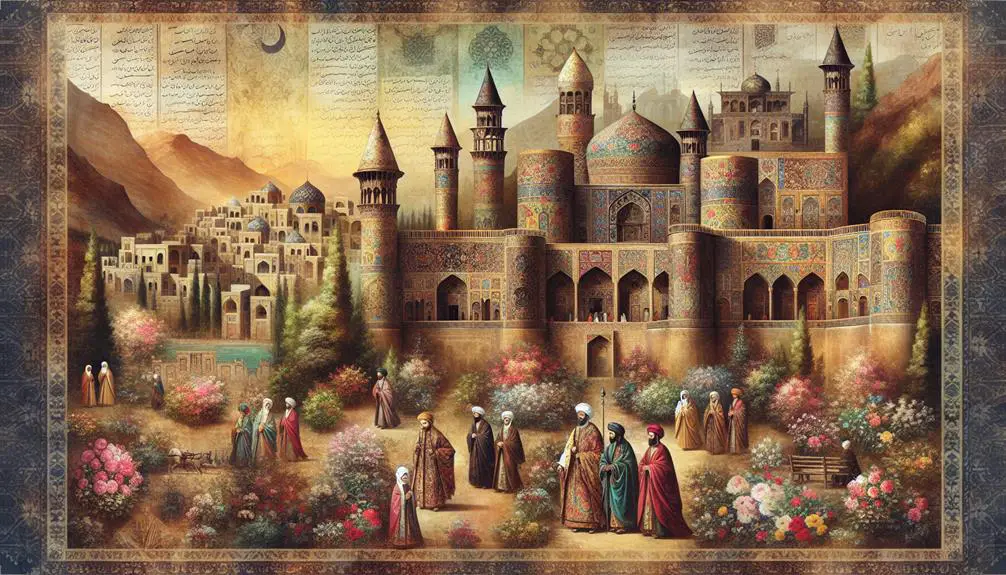
In ancient scriptures, Persia emerges as a pivotal player, its influence and interactions woven into the fabric of biblical narratives. You'll find that the Persian Empire, particularly through its Achaemenid dynasty, left indelible marks on the regions it encompassed, which included the lands of many biblical stories. Scholars often point to Zoroastrian influences as a profound element in this interaction. Zoroastrianism, the state religion of the Persian Empire, introduced concepts of monotheism, angelology, and eschatology, which found echoes in Jewish religious thought during and after the Persian period.
Moreover, the Achaemenid architecture, with its grandiose palaces and ceremonial complexes, such as those found in Persepolis, not only showcased the empire's might but also its commitment to a cosmopolitan ethos, integrating elements from the various cultures within its realm. This architectural philosophy possibly influenced the conceptualization and construction of sacred spaces in the ancient Near East, including those mentioned in biblical accounts.
Thus, through both religious and cultural exchanges, Persia's legacy in ancient scriptures is both profound and multifaceted, reflecting a complex interplay of influences that shaped the development of the region's religious and cultural landscapes.
The Rise of Cyrus the Great
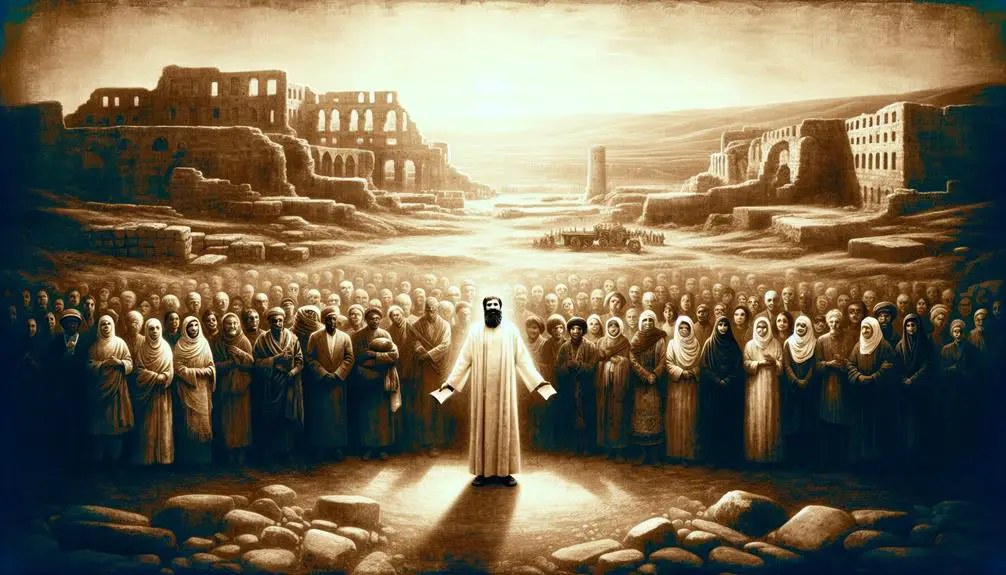
Amid the tapestry of ancient history, Cyrus the Great's ascension marks a pivotal chapter, reshaping the Persian Empire and influencing the biblical narrative profoundly. You'll observe that Cyrus's diplomacy and military strategies were instrumental in his rise to power, showcasing a blend of shrewd negotiation skills and tactical prowess on the battlefield. His approach to governance and conquest, characterized by respect for local customs and religions, set him apart from his predecessors and contemporaries alike.
Cyrus's military strategies, often highlighted by swift and decisive victories, expanded the Persian Empire's borders dramatically. Yet, it's his diplomatic acumen that truly cements his legacy. By incorporating vanquished peoples into his empire through policies of tolerance and respect, he not only secured loyalty but also stabilized and enriched his realm.
This multifaceted approach allowed Cyrus to build an empire that was vast yet sustainable, influencing regions far beyond its borders. His policies and victories are echoed in biblical texts, where he's portrayed as a liberator. Cyrus's unique blend of diplomacy and military acumen thus not only shaped the course of Persian history but also left a lasting imprint on the biblical narrative, illustrating the profound interconnectivity of ancient civilizations.
Esther's Tale: A Persian Setting
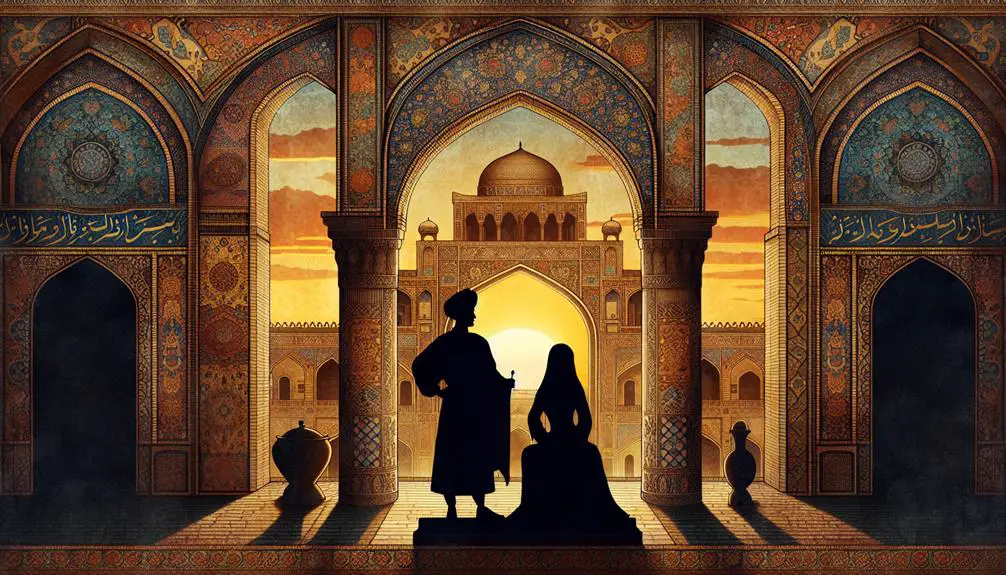
You'll find Esther's tale not only captivating for its narrative but also rich in its depiction of Persian culture and politics. Her royal role offers a unique lens through which to view the intricacies of Persian court life, highlighting both the privileges and challenges she navigated.
Moreover, Mordecai's political maneuvering within this setting provides critical insights into the dynamics of power and influence in ancient Persia.
Esther's Royal Role
Esther's ascent to Persian royalty, as recounted in the biblical narrative, exemplifies her strategic and courageous manipulation of court politics to ensure the survival of the Jewish people. Her story isn't just a tale of individual triumph but a nuanced account of political acumen rooted in her lineage and showcased through her banquet strategies.
- Esther's Lineage: Her Jewish heritage plays a pivotal role, informing her actions and decisions within a foreign court.
- Banquet Strategies: Esther skillfully uses banquets as a stage for diplomacy, leveraging social settings to influence the king.
- Political Acumen: Demonstrates an understanding of power dynamics, using her position astutely.
- Courageous Advocacy: Despite the risk, she advocates for her people, showing bravery and strategic planning.
Persian Cultural Insights
Exploring the Persian cultural context enriches our understanding of Esther's narrative and her strategic maneuvers within the royal court. The Zoroastrian influence, pervasive in Persian society, likely impacted the ethical and moral decisions of characters within the story. This ancient religion, emphasizing truth and righteousness, could shed light on Esther's courageous choices and the moral dilemmas she faces.
Furthermore, Persian festivals, integral to the empire's social fabric, provide a backdrop for the events of Esther's tale. These celebrations, often marked by lavish feasts and elaborate ceremonies, not only set the stage for Esther's interventions but also reflect the opulence and extravagance of the Persian Empire. Analyzing these elements offers a deeper insight into the narrative's setting and the protagonists' actions.
Mordecai's Political Maneuvering
Within the Persian setting of Esther's tale, Mordecai's strategic political maneuvering plays a pivotal role in navigating the complexities of the royal court. His actions, deeply rooted in Mordecai's lineage, reveal a profound understanding of power dynamics and human nature. Here are key aspects of his strategy:
- Utilizing Insider Information: Mordecai leverages his position to gather critical intel, informing the king of a plot against him.
- Promoting Esther's Bravery: He encourages Esther to reveal her Jewish identity, risking her life for her people.
- Building Alliances: Mordecai forms strategic alliances, enhancing his influence within the court.
- Strategic Patience: He waits for the opportune moment to act, ensuring maximum impact.
These maneuvers underscore the importance of wisdom, courage, and timing in achieving political objectives.
Daniel's Visions in Babylon
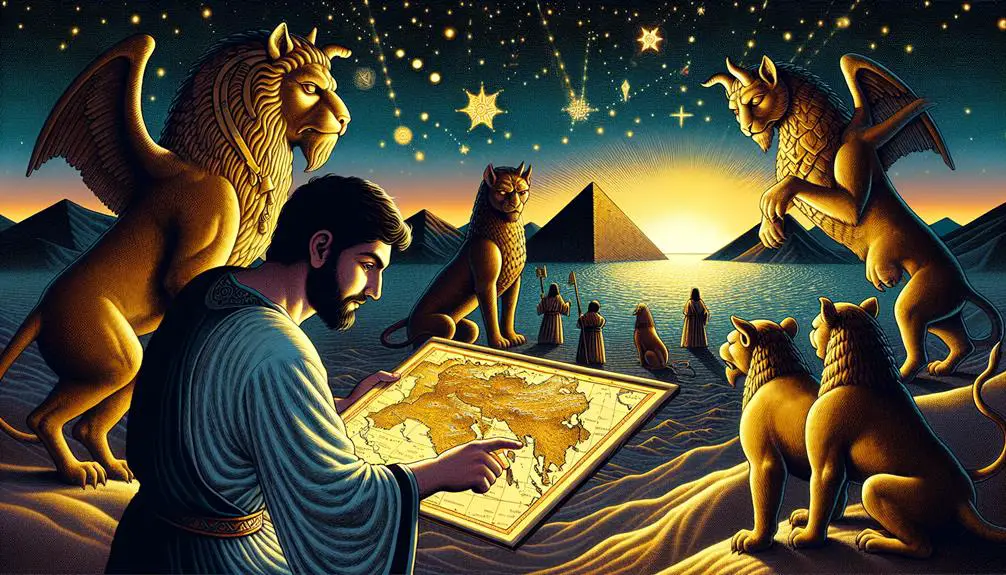
During the Babylonian captivity, Daniel experienced visions that have been subject to extensive scholarly analysis due to their complex symbolism and prophetic nature. These visions, detailed in the biblical Book of Daniel, provide a rich tapestry of imagery that scholars and theologians alike have endeavored to unravel. Among these, Nebuchadnezzar's dream stands out as a pivotal moment, presenting interpretation challenges that have intrigued experts for centuries.
You'll find that Daniel's ability to interpret Nebuchadnezzar's dream, where others failed, not only marked a significant turning point in his own story but also underscored the divine wisdom believed to guide him. This episode, rich in symbolic content, has been dissected for its deeper meanings, shedding light on the intricate relationship between divine messages and human interpreters.
Moreover, Daniel's subsequent visions, including the four beasts and the ram and goat, further contribute to the complex eschatological framework within the biblical narrative. These visions, replete with symbols representing various empires and historical periods, offer a prophetic outlook that extends well beyond Daniel's time, inviting continual reinterpretation in light of evolving historical contexts.
The analytical journey through Daniel's visions reveals not only the challenges inherent in interpreting prophetic literature but also the enduring relevance of these ancient texts in contemporary scholarly discourse.
Nehemiah and the Persian Support
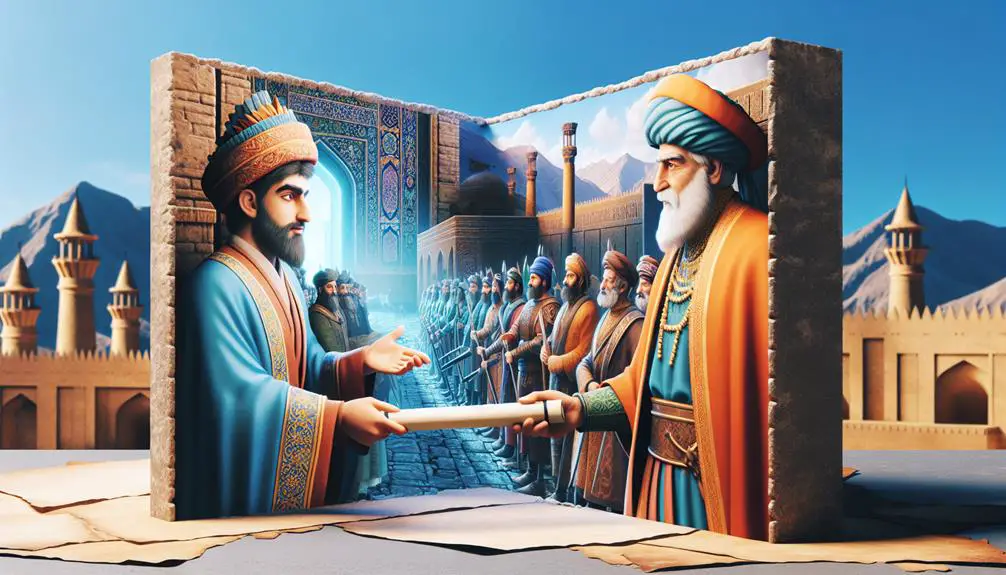
You must consider Nehemiah's unique position, having received Persian authorization to lead the rebuilding of Jerusalem's walls. This act underscores the Persian king's unprecedented generosity and political strategy, facilitating a deeper understanding of Persian influence on Jewish restoration efforts.
Analyzing these dynamics sheds light on the complex interplay between Persian imperial policies and the Judean community's rebuilding endeavors.
Nehemiah's Persian Authorization
How did Nehemiah secure Persian support for his mission to rebuild Jerusalem's walls, marking a pivotal moment in Judeo-Persian relations? Under Artaxerxes' reign, a time when Persian cuisine possibly mirrored the empire's richness and diversity, Nehemiah, then a cupbearer, navigated through intricate court politics to gain royal backing.
- Understanding Court Intricacies: Nehemiah leveraged his position close to Artaxerxes, gaining trust and favor.
- Strategic Request: He meticulously chose the moment to present his request, ensuring Artaxerxes was in a receptive mood.
- Emotional Appeal: Nehemiah expressed his deep distress over Jerusalem's state, evoking the king's sympathy.
- Guaranteed Safeguards: He asked for letters ensuring safe passage and support, demonstrating foresight and planning.
This strategic approach highlights the complexity of Judeo-Persian interactions during a critical historical juncture.
Rebuilding Jerusalem's Walls
Having secured Persian support, Nehemiah embarked on the monumental task of rebuilding Jerusalem's walls. This project not only fortified the city but also symbolized a significant phase in the restoration of Jewish identity and autonomy under Persian auspices.
The wall construction techniques employed were advanced for their time, leveraging local resources and labor to expedite the process. This initiative didn't just have military implications; it was a catalyst for Jerusalem's economic revitalization. By bolstering the city's defenses, trade routes became secure, encouraging merchants and artisans to settle within its walls.
This economic impact was profound, transforming Jerusalem into a bustling hub of commerce and religion. Ultimately, it reinforced Jewish social and cultural coherence in the face of external pressures.
Persian King's Generosity
The remarkable generosity of the Persian king played a pivotal role in enabling Nehemiah's successful reconstruction of Jerusalem's walls, showcasing a unique instance of imperial support for a subject people's religious and cultural restoration. This support wasn't merely a political maneuver but also reflected the broader Zoroastrian influence on Persian rulers, emphasizing charity and rebuilding as sacred duties.
- Zoroastrian Benevolence: The king's actions mirrored Zoroastrian virtues of generosity and support for community welfare.
- Imperial Patronage: Provided not just moral but substantial financial and material support for the project.
- Cultural Sensitivity: Acknowledged and respected the religious significance of Jerusalem to its inhabitants.
- Architectural Legacy: Persian architecture and engineering expertise likely influenced the reconstruction techniques, contributing to the project's success and durability.
The Prophets and Persia
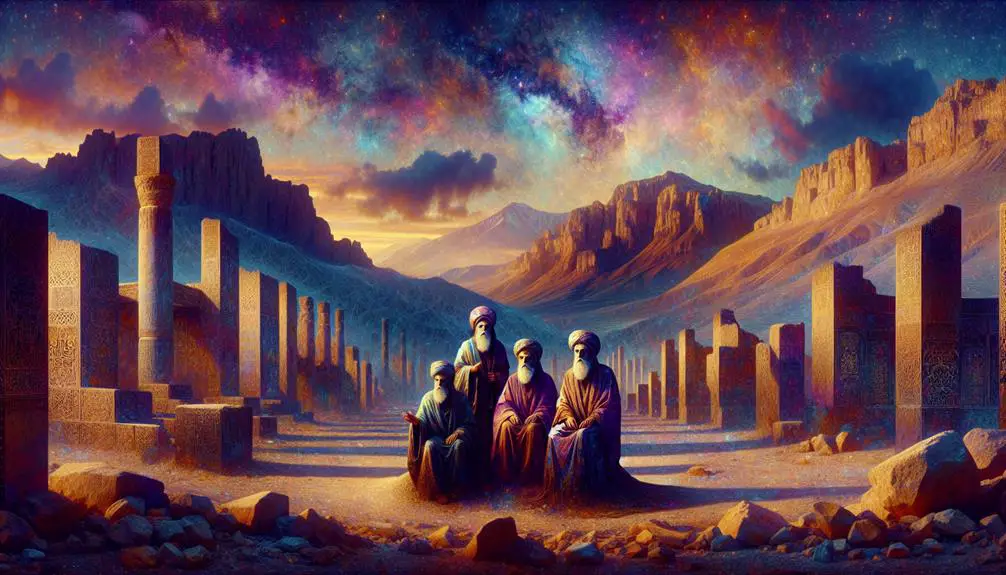
Several prophets in the Bible interacted with Persia, offering insights into its role and influence during their times. Notably, the period marked significant Prophet migrations, as leaders and their followers sought refuge or were exiled to the Persian Empire. This movement wasn't merely geographical but also deeply spiritual and cultural, allowing for an exchange of ideas and beliefs between the Hebrews and their Persian counterparts.
One can't overlook the Zoroastrian influence on these migrating prophets. Zoroastrianism, the state religion of Persia, emphasized concepts such as the battle between good and evil, the importance of moral choice, and the anticipation of a savior. These themes resonated with the Jewish prophets, who found parallels in their own teachings. The interaction led to an enriching dialogue, further shaping the prophetic messages that were to be recorded in the Hebrew Bible. This cross-cultural exchange underscores the complexity of religious evolution, highlighting how beliefs can be both deeply rooted and fluid when cultures interact.
Analyzing these interactions, it's evident that Persia didn't just serve as a backdrop for biblical narratives but played a pivotal role in the development and dissemination of religious ideas.
Alexander's Conquest of Persia
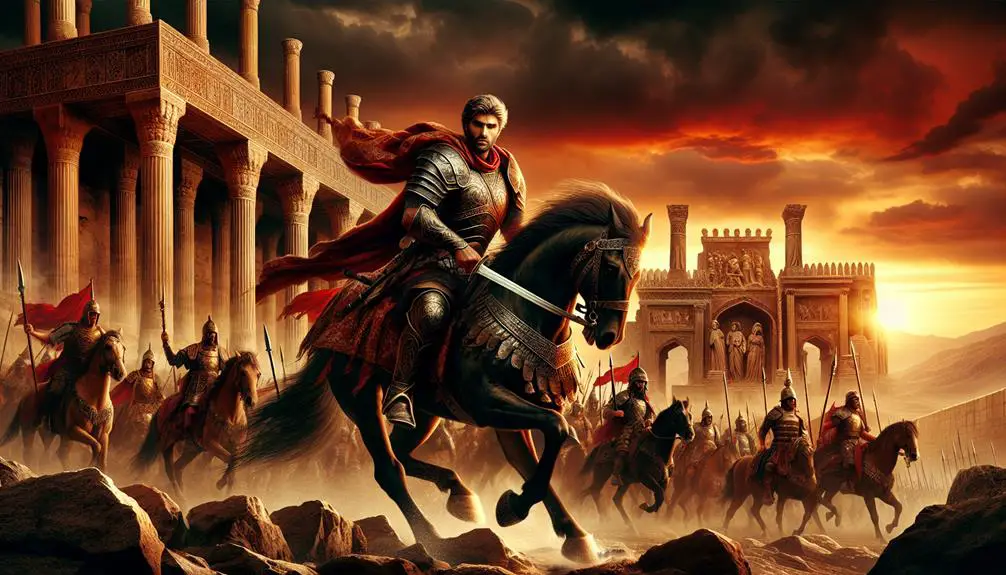
While exploring the multifaceted interactions between the Hebrew prophets and Persia, it's crucial to consider how Alexander's conquest of this empire significantly altered the religious and cultural landscapes of the region. The campaign, marked by strategic brilliance and formidable challenges, reshaped the ancient world's dynamics.
Here are four key aspects to understand about this conquest:
- Alexander's Tactics: Alexander the Great employed innovative military strategies, including the use of phalanx formations, cavalry maneuvers, and siege techniques, which allowed him to overcome the vast and diverse forces of the Persian Empire.
- Persian Resistance: Despite facing a technologically and tactically superior force, Persian soldiers and commanders showed remarkable resilience. Their defense strategies, though ultimately unsuccessful, demonstrated the empire's military capabilities and the challenges Alexander faced.
- Cultural Impact: The conquest led to the Hellenization of the Persian territories, blending Greek and Persian cultures. This fusion left a lasting impact on art, language, and religion in the region.
- Religious Repercussions: Alexander's policies towards the religions of the conquered territories were generally tolerant, allowing for a synthesis of Greek and Persian religious practices, which influenced the spiritual landscape of the region for centuries.
These elements highlight the complexity of Alexander's conquest of Persia and its profound implications for the ancient world.
Modern Interpretations of Biblical Persia

Exploring modern interpretations of Biblical Persia reveals a complex tapestry of historical, religious, and cultural analyses that challenge traditional perspectives. You'll find that scholars are increasingly appreciating the nuanced role of Persia in the development of early Christian thought, particularly through the lens of Persian Christianity. This emerging viewpoint emphasizes the symbiotic relationship between the Persian Empire and the nascent Christian communities within its borders, suggesting that Persian governance and cultural norms significantly shaped Christian theological development and organizational structures.
Moreover, the Zoroastrian influence on Biblical narratives and Judeo-Christian ethics is now recognized as more profound than previously acknowledged. The concepts of monotheism, angelology, eschatology, and the cosmic struggle between good and evil, central to Zoroastrianism, appear to have found echoes in Jewish and Christian texts, hinting at a cross-pollination of religious ideas. This interconnection proposes a more interconnected ancient world where ideas freely traversed imperial borders, challenging the notion of isolated development of religious doctrines.
Such modern interpretations invite you to reconsider the historical narrative of Biblical Persia, recognizing its critical contribution to shaping the religious landscape of the ancient Near East.
Frequently Asked Questions
How Do Contemporary Iranian Scholars Interpret Iran's Representation in the Bible, Outside of Traditional Western Perspectives?
You're exploring how contemporary Iranian scholars view Iran's depiction in the Bible, stepping away from Western interpretations. These scholars often engage in religious diplomacy, offering fresh insights and scholarly reinterpretations.
They delve into historical and theological analyses, seeking to understand Iran's biblical portrayal in a new light. This approach not only enriches academic discourse but also promotes a deeper, more nuanced understanding of Iran's role and identity in biblical narratives.
What Are the Linguistic Connections Between Ancient Persian Languages and the Languages Used in Biblical Texts, and How Do They Influence Our Understanding of These Scriptures?
You're delving into how language evolution and script comparisons between ancient Persian languages and those found in biblical texts deepen our understanding of these scriptures. By analyzing linguistic connections, you uncover nuances that might alter interpretations of sacred texts.
This scholarly approach sheds light on the complexities of translation and historical context, offering a more nuanced perspective on how these languages have influenced each other and shaped religious narratives over centuries.
Are There Any Archeological Findings in Iran That Directly Corroborate or Challenge Narratives Found in the Bible Related to Persia and Its Rulers?
You might think it's hard to link archeology directly to texts as ancient as the Bible, but Persian artifacts have indeed shed light on this.
In Iran, discoveries like the Cyrus Cylinder have illustrated the historical accuracy of some Biblical narratives, particularly those involving Persian rulers.
These findings not only corroborate but also enrich our understanding of how accurately the Bible reflects historical events, challenging any skepticism about its connections with real-world history.
How Have the Relations Between Modern-Day Iran and Israel Been Influenced by the Historical Contexts Provided in the Bible Concerning Persia?
You're looking into how modern-day Iran and Israel's relationship has been shaped outside of biblical history. Focusing on nuclear tensions and diplomatic strategies, it's clear these elements heavily influence their interactions today.
These factors, more than ancient texts, dictate the current dynamics. While historical narratives may add depth, it's the contemporary issues of security and political maneuvering that are most significant in understanding the complexities between these two nations.
In What Ways Have Non-Religious Iranian Cultural Traditions Preserved or Reflected Stories and Characters From the Bible Associated With Ancient Persia?
You mightn't realize it, but Iran's non-religious cultural traditions, including Nowruz celebrations and Zoroastrian influences, subtly weave biblical stories and characters from ancient Persia into their fabric.
These elements act as cultural threads, preserving ancient narratives in a modern context.
Analyzing this interplay provides a fascinating glimpse into how a nation's cultural heritage can reflect and uphold historical tales, even outside the realm of explicit religious practice.
Conclusion
In analyzing biblical references to Persia, you'll find a tapestry of historical and prophetic narratives, intertwined with the rise and fall of empires. Consider the image of Cyrus the Great, a Persian king, likened to a shepherd in Isaiah 44:28, guiding his flock.
This metaphor not only highlights Persia's significant role in biblical history but also emphasizes the intricate ways divine providence and human history intersect. Such insights offer a rich field for scholarly exploration, inviting a deeper understanding of ancient scriptures and their relevance today.


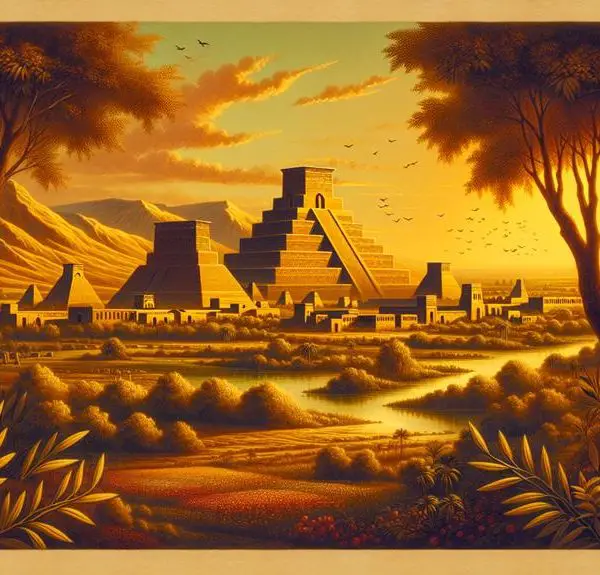
Sign up